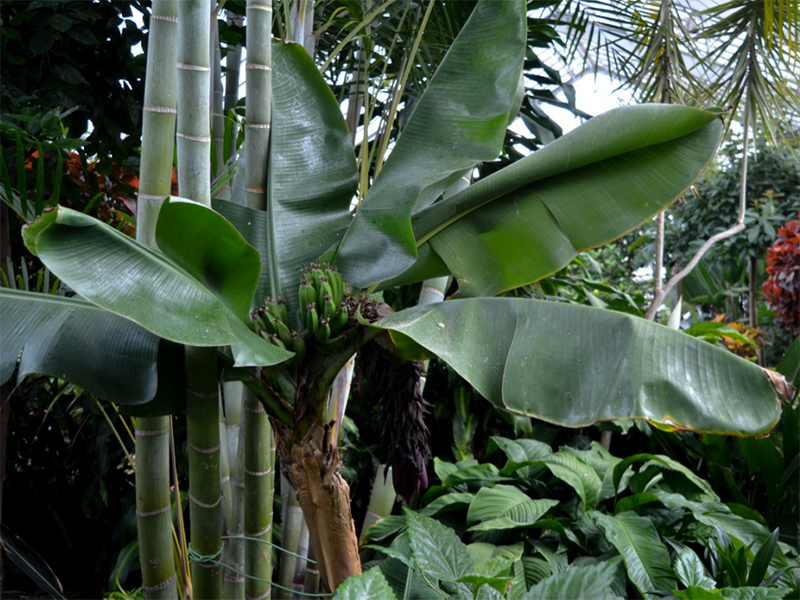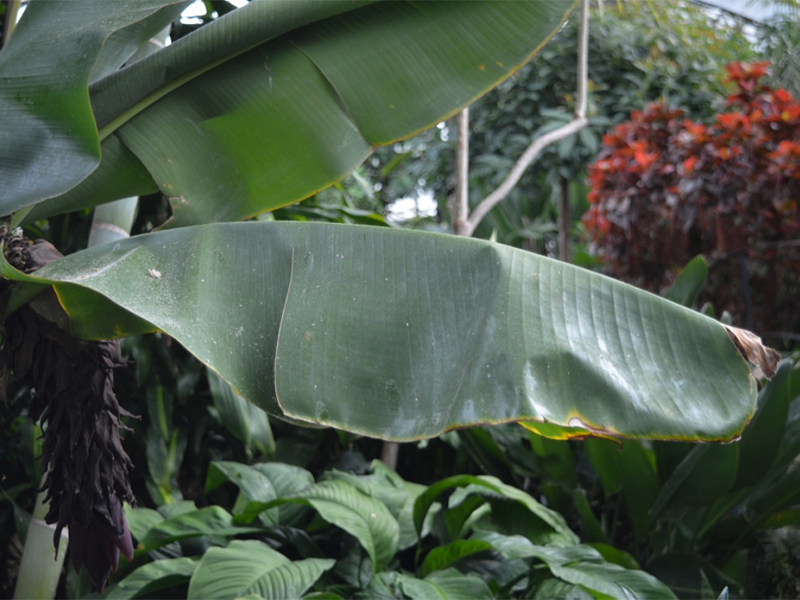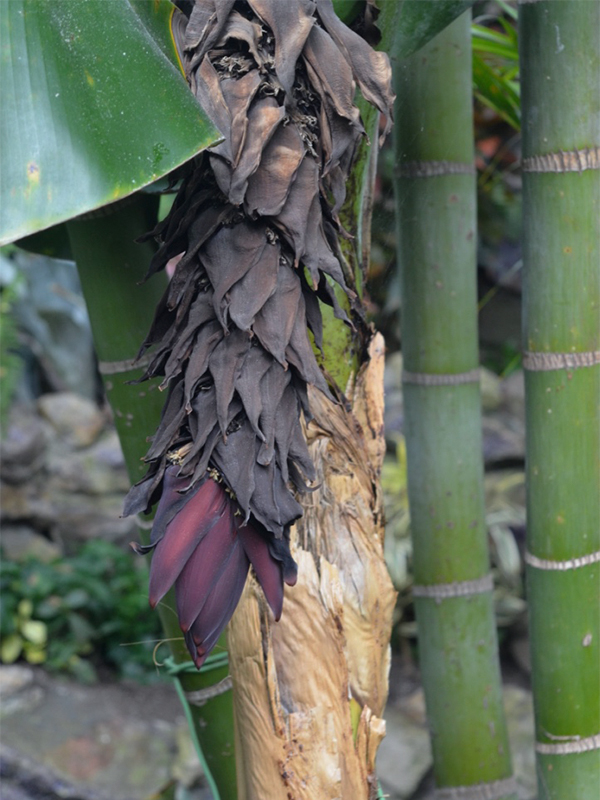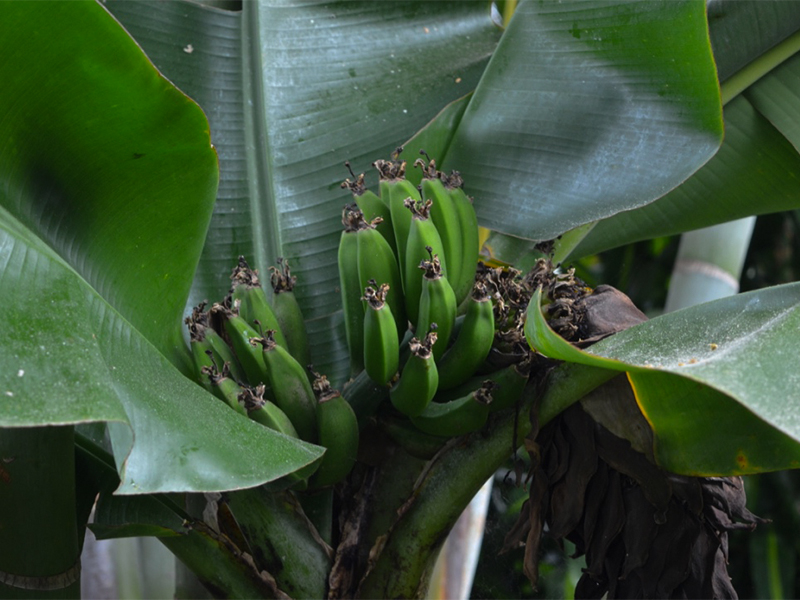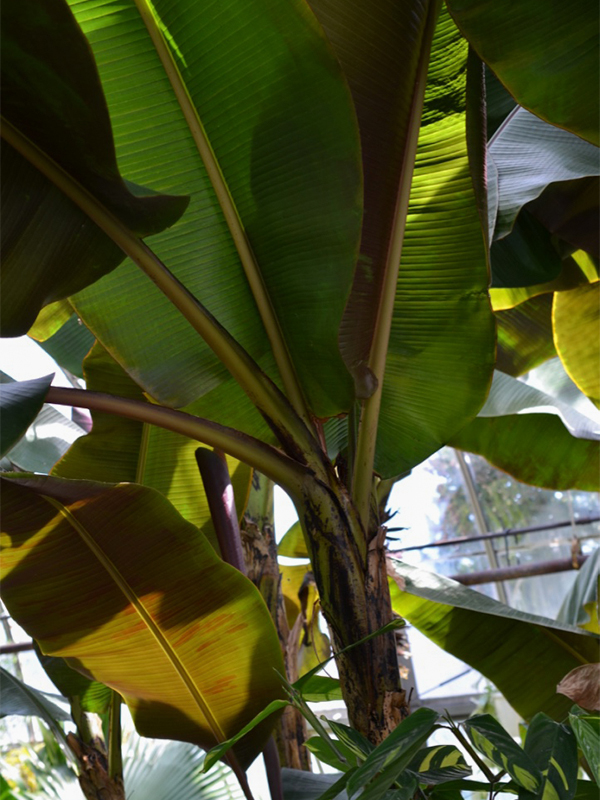
Perennials, Tropicals > Musa > Musa acuminata > Musa acuminata
Musa acuminata
Banana, Cavendish Banana, Chinese Banana, Ladyfinger Banana
Origin: Southeast Asia, Australia and Eastern Africa.
| Family |
| Musaceae |
| Genus |
| Musa |
| Species |
| acuminata |
| Category |
| Perennials, Tropicals |
| USDA Hardiness Zone |
| 10 - 11 |
| Canadian Hardiness Zone |
| Requires cold season protection under glass. |
| RHS Hardiness Zone |
| H1c - H3 |
| Temperature (°C) |
| -5 - 10 |
| Temperature (°F) |
| 23 - 50 |
| Height |
| 3.6 - 6 m |
| Spread |
| 1.8 - 3 m |
Photographs
Description and Growing Information
Flowering Period
| General Description |
| Large, fast-growing, suckering, evergreen plant that produces bananas. |
| Landscape |
| Whether grown outdoors in the landscape or indoors as a houseplant, bananas need lots of space. Effective when grown as a garden centre piece or for tropical flair near water bodies. |
| Cultivation |
| Best grown in full sun with organically rich, medium moisture, well-drained soil. Needs consistently moist soils that do not dry out. Fertilize regularly during growing season. Site plants in areas protected from strong winds which can severely damage the large leaves. |
| Growth |
| Fast |
| Pests |
| Aphids, spider mites, mealybugs, scale, anthracnose, wilt and mosaic virus. |
| Bark/Stem Description |
| Leaf sheathes overlap to form a trunk-like pseudostem (false stem). After flowering and fruiting, the pseudostem dies, but the roots push out new shoots (suckers) which form new pseudostems. |
| Leaf Description |
| Huge, paddle-shaped leaves that grow to 2-3.5 m long |
| Flower Description |
| Large and showy. |
| Fruit Description |
| Plant grows edible fruits known as bananas. |
| Colour Description |
| Leaves are medium green. Flowers are cream to yellow. Fruit starts out green and ripens to yellow. |
| Texture Description |
| Leaves are smooth and leathery. |
| Notable Specimens |
| Centennial Conservatory, Thunder Bay, Ontario, Canada. |
| Propagation |
| By division of offsets. |
| Ethnobotanical Uses (Disclaimer) |
| The fruit is used in a wide variety of culinary dishes and beverages. While leaves are commonly used to wrap foods. The unopened flower bud is also serves as a food. |
